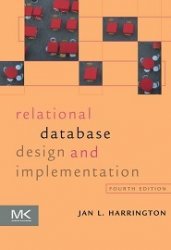White Paper: Implementing Relational Databases for Efficient Data Storage and Retrieval
Introduction
Relational databases have been the cornerstone of data management for decades. They provide a structured approach to organizing and storing data, making it easily accessible and manageable. This white paper explores the fundamental concepts of relational databases, their key components, and best practices for implementation.
Understanding Relational Databases
A relational database is a collection of tables, where each table consists of rows and columns. Each row represents a record, and each column represents a field. The relationships between tables are defined using primary and foreign keys.
Key Components of a Relational Database:
- Tables: The basic building block of a relational database, storing data in rows and columns.
- Rows: Individual records within a table.
- Columns: Fields that define the attributes of each record.
- Primary Key: A unique identifier for each record in a table.
- Foreign Key: A field that references the primary key of another table, establishing a relationship between the two.
Relational Database Design
Effective database design is crucial for optimal performance and data integrity. Key design principles include:
- Normalization: Breaking down data into smaller, more specific tables to reduce redundancy and improve data consistency.
- Data Modeling: Creating a visual representation of the database structure, including entities, attributes, and relationships.
- Entity-Relationship (ER) Diagrams: A graphical tool for modeling database structures.
Implementing Relational Databases
Choosing a Database Management System (DBMS):
Several popular DBMS options are available, including:
- MySQL: A widely-used open-source DBMS.
- PostgreSQL: A powerful open-source object-relational database system.
- Oracle Database: A commercial DBMS known for its scalability and performance.
- Microsoft SQL Server: A versatile DBMS with strong integration with Microsoft products.
Data Modeling and Design:
- Identify Entities: Define the key objects or concepts in your application.
- Define Attributes: Determine the properties or characteristics of each entity.
- Establish Relationships: Specify how entities are related to each other (one-to-one, one-to-many, many-to-many).
- Create ER Diagrams: Visualize the database structure using ER diagrams.
Data Definition Language (DDL):
- Create Tables: Define the structure of tables using SQL commands.
- Define Relationships: Establish primary and foreign key constraints.
- Create Indexes: Improve query performance by creating indexes on frequently searched columns.
Data Manipulation Language (DML):
- Insert Data: Add new records to tables.
- Update Data: Modify existing records.
- Delete Data: Remove records from tables.
- Query Data: Retrieve specific information from the database using SQL queries.
Best Practices for Relational Database Implementation
- Normalize Your Data: Reduce redundancy and improve data integrity.
- Index Strategically: Create indexes on frequently searched columns to optimize query performance.
- Optimize Queries: Write efficient SQL queries to minimize query execution time.
- Use Stored Procedures: Encapsulate complex database operations to improve performance and security.
- Implement Security Measures: Protect your database from unauthorized access and data breaches.
- Regularly Back Up Your Data: Create regular backups to safeguard against data loss.
- Monitor Performance: Use monitoring tools to identify performance bottlenecks and optimize your database.
Conclusion
Relational databases remain a powerful tool for managing structured data. By following best practices and leveraging the capabilities of modern DBMSs, organizations can effectively store, retrieve, and analyze their data to drive informed decision-making.
References:
- MySQL Reference Manual: https://dev.mysql.com/doc/
- PostgreSQL Documentation: https://www.postgresql.org/docs/
- Oracle Database Documentation: https://docs.oracle.com/en/database/
- Microsoft SQL Server Documentation: https://learn.microsoft.com/en-us/sql/sql-server/?view=sql-server-ver16
- Database Management Systems, 3rd Edition- Ramakrishnan
- Relational Database Design and Implementation: Clearly Explained 4th Edition- Harrington
By understanding the fundamentals of relational databases and applying these best practices, you can build robust and efficient database systems that support your organization's evolving needs. Contact ias-research.com for details.



